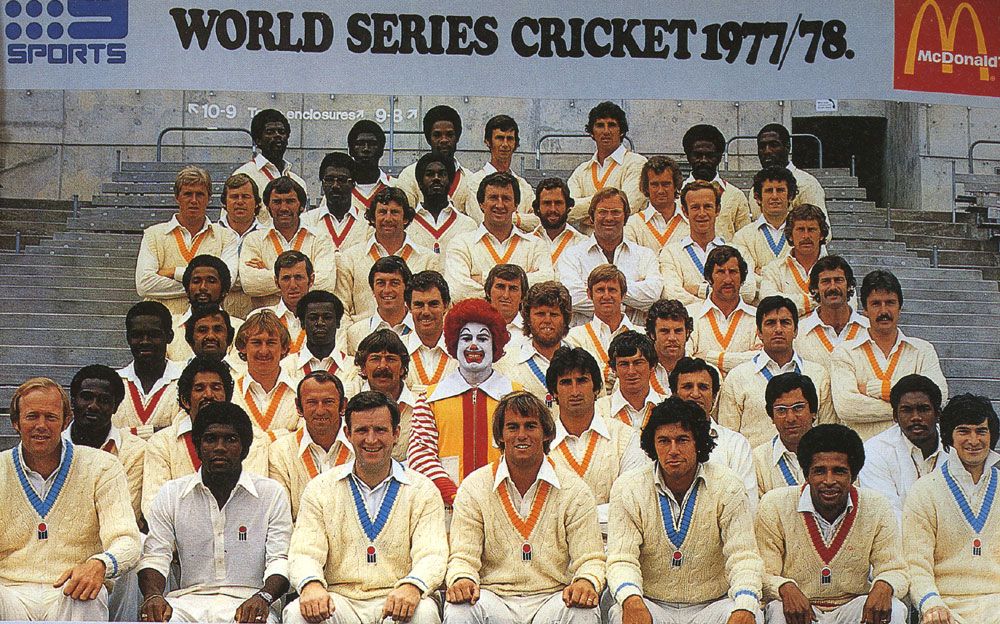
The top five 'What If' incidents in Sports
Time and tide wait for none. There is a lingering sense of absolution associated with the ticking clock. For unlike the hour glass full of sand, which can be inverted at will, reversing the flow of time is mission impossible. In spite of this reality, we have always been enamoured by the timeless allure of the time machine, a device brought into public memory by H.G.Wells. The time machine would give humans the ability to travel back and forth in time, to tweak a few things here and there, opening up an entirely different realm of possibilities, far removed from the real world’s happenings.
They say every story has a beginning, that everyone has a past which shapes their future, and sports which acquire a mystical aura due to legacies built over time, are no different. So without further adieu, I take you down memory lane, by plucking out five instances from the history archives, which according to me, represented a ‘Waterloo’ moment, the occurrence of which rendered their respective sports to be never the same again. Raising the all too-familiar head-scratching question:
What if?
1 – World Series Cricket (1977-1979):-
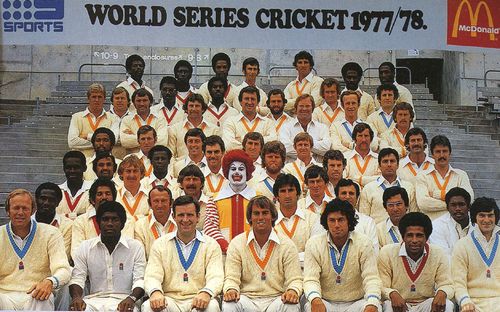
The game changer
Before cricketers were fully loaded, well-known global superstars, before cricket was an entertainment spectacle sans the IPL, before disputes between players and their respective country’s boards were the norm, there used to be a time when cricket boards were all-pervading divinity, exercising complete control over broadcasting rights and player affiliations, thus leading to poor remuneration for players, a decreasing standard of play and dipping audience numbers.
All this after the conduction of a fairly successful 1975 World Cup.
But in 1977, something happened. An uproar, a rising whose impact is still felt today in the cricketing world. Kerry Packer launched the World Cricket Series, a competition which enticed international players with the allure of striking gold. A legal battle ensued, and surprisingly, the ICC lost out to Mr. Packer, with the court decreeing the infringement of national loyalty upon the rights of the individual to earn more. This timely impetus galvanised Packer and his team, who in spite of great difficulties, managed to organise a world-class tournament, featuring titans like Andy Roberts, Dennis Lillee, Viv Richards, Imran Khan, Tony Greig, et al, which ensued a rapturous response from the public who flocked to watch matches. The WSC introduced novel concepts like drop-in pitches, day-night matches, coloured jerseys and large scale-sponsorships from franchises like McDonalds which provided the event with an ‘I am loving it’ experience. Though it ultimately ran out of steam in 1979, it seems difficult to ascertain the WSC’s impact on ODIs, and whether the ground-breaking success of the IPL would have been possible without the inclusion of all its constituent elements.
2 – The rise of the dust storms (1973):-
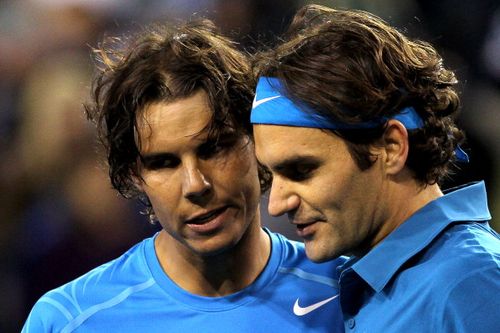
INDIAN WELLS, CA – MARCH 17: Rafael Nadal of Spain congratulates Roger Federer of Switzerland after their match during the semifinals of the BNP Paribas Open at the Indian Wells Tennis Garden on March 17, 2012 in Indian Wells, California.
Be it Bjorn Borg and John McEnroe’s heated encounters or Pete Sampras and Andre Agassi’s relentless duels, history has seen men’s tennis bear witness to many a great rivalry. But there is one clash which has defined two careers like none other.
Roger Federer versus Rafael Nadal.
Two champions who have acquired mythical status due to their other-worldly ability to conjure magic on the court. Roger Federer is widely considered to be the greatest tennis player of all time. A freak of nature, his elegance and panache make tennis look so simple and a joy to watch. But then there is the Spanish Matador, the eternal warrior, the king of clay, and Roger Federer’s Achilles heel, Rafael Nadal. The Spaniard holds a significant edge over Federer in head-to-head meetings with an overall record of 18-10, with 14 of these matches having been played on clay, Nadal’s breeding ‘court’. Shift this rivalry back to 1972, and you have a clear-cut winner in the form of the Swiss maestro. Yes back in an era where three out of the four Grand Slams were played on grass and the other one on a hard court, the sport would have surely benefited Federer, for he takes to the grass as a fish takes to water, his seven Wimbledon triumphs bearing testament to that.
Besides, the doing away of clay courts entirely would have robbed tennis of players like Gustavo Kuerten, Guillermo Coria, Carlos Moya, and the mercurial Justine-Henin, all of whom could truly call Roland Garros their adopted home. Who says that the grass is greener on the other side, when you have the finely crushed clay on which you can seamlessly glide?
3 – The Montreal Screw job (1996):-
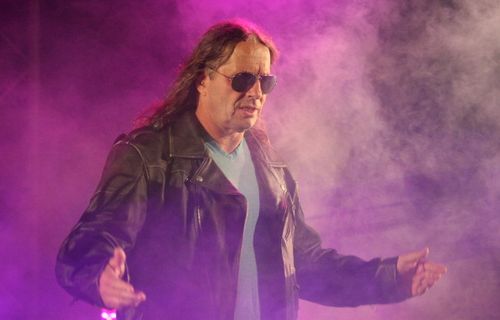
Bret Hart
“Bret screwed Bret”.
These immortal words still resonate strongly within the WWE universe. December 1996, Survivor Series, Montreal, the homeland of the champion, the face of the WWF, Bret the ‘Hitman’ Hart, facing off against the Heart Break Kid Shawn Michaels with the WWF championship on the line. A lot of bad blood has been spilled, the Canadian flag has been nose drilled, rumours were abound of the hit man moving on to the WCW in three weeks time. The battle began with aplomb, but the shocking turn of events which were to follow were akin to the blasting of a megaton bomb.
HBK, Vince McMahon and the referee contrived against Hart, stripping him of his WWF title, even though he had never tapped out. But the baton was effectively passed on, heralding a new dawn. Gone was the clean fight to your last breath concept, and in came the Attitude era. An era defined by the beer-guzzling, foul-mouthed, ice-cold, Texas ‘stunner’ Rattlesnake, the party spoilers, advocates of the devil himself, the DX, and the autocratic yet erratic boss Mr. McMahon, which effectively made WWF the hard-core, adrenaline pumping, no holds-barred entertainment package that we have come to know of.
With greater twists leading to the blurring of the boundaries between a heel and a face, unpredictable and eccentric story-lines an ensemble cast also comprising of the American badass The Rock and Eddie “I lie, I cheat, I steal” Guerrero, the action on display kept the audiences on the edge of their seats, while the banter off it intrigued them to no end. More importantly, the upsurge in fortunes of the WCW were reversed, and Vince was able to buy-out his rival franchise in 2003, to render the WWE the sole flag-bearer of the Sports Entertainment business. Truly a what-if (it had not happened) moment.
4 – The 1950 FIFA World Cup:-
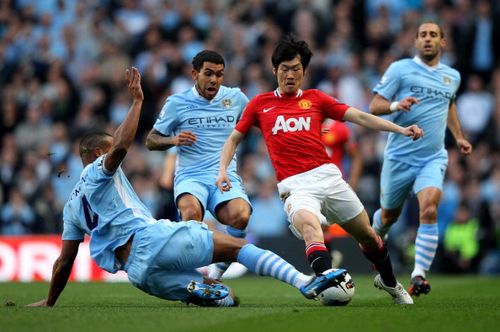
MANCHESTER, ENGLAND – APRIL 30: Ji-Sung Park of Manchester United is tackled by Vincent Kompany of Manchester City during the Barclays Premier League match between Manchester City and Manchester United at the Etihad Stadium on April 30, 2012 in Manchester, England.
When Sepp Blatter had announced that India ‘may’ one day host the FIFA World Cup, excitement ran high amongst the masses at the mouth-watering prospects of the future of the ‘beautiful game’ in our blessed country. But the wait could’ve been over long before, had our men’s team boarded the plane to Brazil in 1950. In a world torn with strife, and still reeling under the devastating effects of World War Two, India was officially invited to participate in the tournament proper, due to Indonesia’s last minute withdrawal.
The ‘tryst with destiny’ never materialised though, either due to lack of funds to fuel their flights, or their stubborn refusal to don their boots which could have kick-started a glorious chapter in the still incomplete Indian football odyssey. Who knows what the exposure and enormity of the achievement could have done in the overall development of the game on a nation-wide basis, which is still equally popular amongst the youth, when compared to the religion that is cricket?
One only has to look at fellow Asian countries like Japan and South Korea, who not only are regular fixtures at the World Cup, but can boast of players like Park-Ji Sung and Shinji Kagawa who have represented a certain Manchester United, and Ryo Miyaichi, Junichi Inamoto and Park Chu-Young, who either played or currently play for Arsenal.
Who knows what the impetus at that time may have done in terms of providing a greater platform for our youth to excel, beginning from the grass root levels? But the wait is still on some 62 years later, for the Indian Park who can bear the Indian flag in England with pride and a little style.
5 – The San-Marino Grand Prix (1994):-
The writing was on the wall. The echo of his clamours were crystal clear. And yet they went unheard, leading to his demise, leaving behind a vacuum, filled with only silence. Rubens Barrichello had been critically injured just a few weeks earlier, while Ronald Ratzenberger had crashed to his death a day ago. He had been apprehensive about his car all along. It was like a wild horse, full of speed, yet difficult to tame. But still, he went on to meet his God, for nothing could separate him from his love. Ayrton Senna is regarded by many as the greatest motorsports driver that there ever was. The three time-champion, with the the second-highest number of pole positions, the Brazilian was as quick as they came and was a peerless ‘under the shower’ driver.
Known as the man who dethroned Alain Prost, it is only tragic that the world of motorsports missed out on an epic rivalry that could have been between him and the then relatively unknown German Michael Schumacher. It is debatable as to whether Schumi would have waltzed his way to back-to-back championships, which paved the way for his unprecedented dominance of the circuit for five straight years with the race-horse that is Ferrari.
What the calamity did do is improve regulations for driver safety, leading to tweaks in the Imola circuit. The GPDA was also reconstituted, which has ensured that that any untoward incidents in the future have been minimised to the greatest extent possible.
R.I.P. Ayrton Senna.
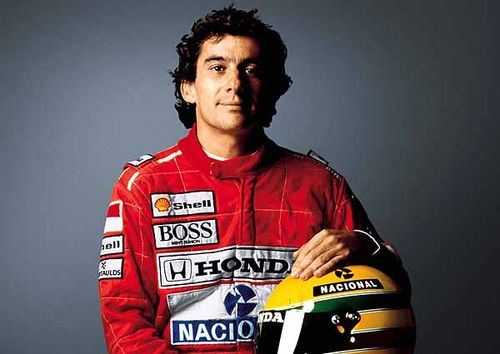
The lone ranger
Finally, I would like to say that the beauty with the past is that it is constant. That it never changes, just like the bitter-sweet emotions imbibed within a photograph, a remembrance of what we were, what we did and what we could have possibly done, that is in this bright future we don’t forget our past, and learn from it, derive strength from it, to incite hope and carve a niche for us, leading us to the road of self-discovery.